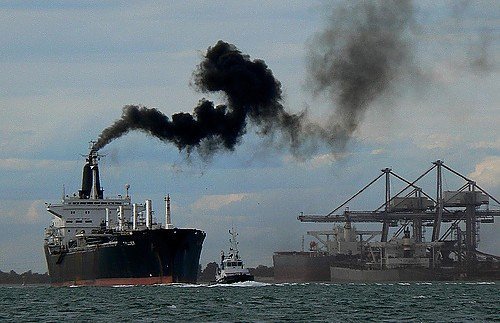Smoke and mirrors

Katherine Hawes from Aquarius Lawyers on complex impending ECA legislation
Despite ship transportation being considered as the most energy efficient mode of transport, it still represents a significant contribution to global emissions.
The sulphur content of marine fuels is determined by local legislation and regulated through the International Maritime Organization (IMO) MARPOL Annex VI which is in turn implemented by national legislation of the signatory parties.
During the 1980s the International Maritime Organisation (IMO) started work on the reduction of air pollution from ships. However, it wasn’t until May 2005, with the ratification of MARPOL Annex VI, that it directly impacted the shipping industry. Since that time the emissions from shipping have played a major part in the development of the marine industry, with the IMO increasingly setting tighter limits. In addition, the European Union has added supplementary requirements to those imposed by IMO and the state of California has set its own specific requirements.
The MARPOL Annex VI legislation regarding sulphur emissions is mainly contained in Regulation 4 and Regulation 14 which covers sulphur oxides and particulate matter. The regulation defines the sulphur content of the fuel where compliance is to be achieved on the basis of the fuel as loaded. There are different sulphur limits applicable inside and outside Emission Control Areas (ECAs). The ECAs are as follows:
1. Baltic Sea area – as defined in Annex I of MARPOL (SOx only);
2. North Sea area – as defined in Annex V of MARPOL (SOx only);
3. North American area
4. United States Caribbean Sea area
Most ships which operate both outside and inside these ECAs will therefore operate on different fuel oils in order to comply with the respective limits. In such cases, prior to entry into the ECA, it is required to have fully changed-over to using the ECA compliant fuel oil and to have onboard implemented written procedures as to how this is to be undertaken.
The European Union legislation also contained certain additional requirements. These include such ships as passenger ships going to or from any EU port, the fuel sulphur is limited to a maximum of 1.5% m/m. The 2012 review of the EU legislation incorporates the latest MARPOL Annex VI regulations and contains the following additional requirements:
• In EU waters outside ECAs, the current 3.50% m/m fuel sulphur limit will change to 0.5% m/m from 1 January 2020. The 0,10%m/m sulphur limit will be retained in respect of fuels used by ships while at berth.
• Fuel with more than 3,50% m/m sulphur will only be allowed for sale and use by ship equipped with an approved closed loop (ie no discharge of wash water overboard) exhaust gas cleaning system.
The European Parliament Directive 2009/30/EC limited the sulphur content of fuels used in inland waterway vessels to a maximum of 0.0010%m/m(10 mg/kg) from 1st January 2011.
Inadequate supplies of low sulphur fuel oils will mean charterers too will need to bunker more frequently which would have significant effects on the vessel’s daily operating costs. It would also have a pronounced effect of the cargo carrying capacity the vessel could uplift, plus port call delays and associated charges.
In summary, owners, operators and charterers will need to ensure that their bunker specifications, fuel supply agreements, and charterparties all take the new requirements into account. In addition, the possible impact of inadequate supplies of low sulphur fuel on operational costs will also need to be considered. For vessels operating in the ECAs, fuel changeover procedures, fuel specification charts and associated documentation will additionally be required.
